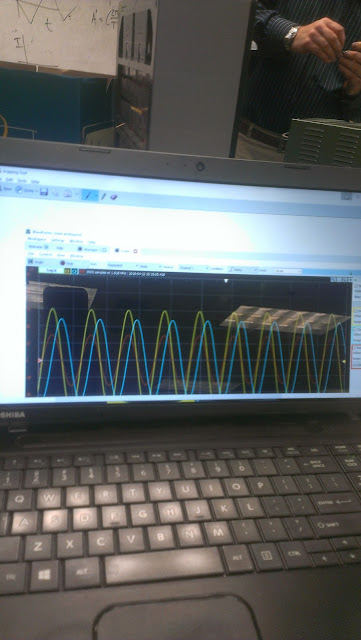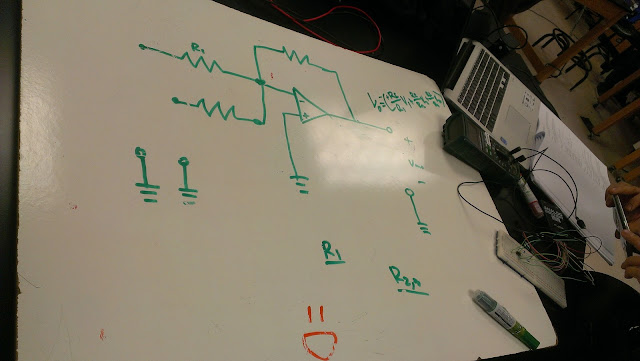Today we began with a short derivation of an integrator op amp.
These are the graphs to the integrator.
We then moved on to a short experiment and solved for a resistor that did not saturate the op amp. That resistor was a 1kohm and the frequency was at 1kHz with a .5V source.
Below is a picture of the circuit.
The graph at 1kohm, 500 Hz, .5V.
Here we learned about the unit step function and the graphs to the derivation.
We then worked on some examples to solve for v(0), v(infinity), and tau.
Below is an exercise solving for the current where the inductor is treated like a wire.








































